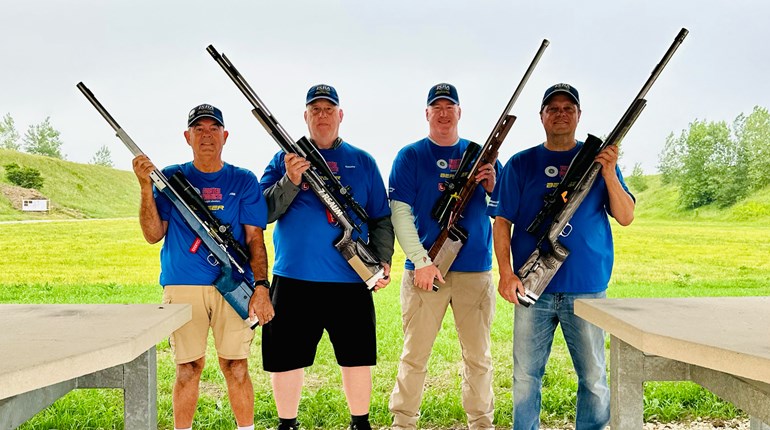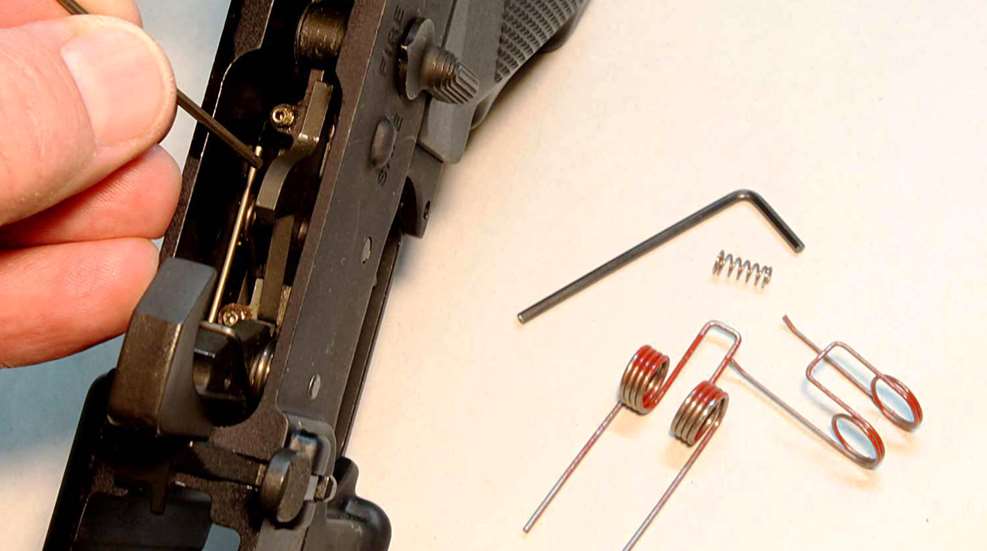
What is an “upgrade?” For NRA and CMP high power competition, an upgrade is a competition-legal change to the basic Service Rifle that makes the rifle easier to shoot in an ergonomic sense, or provides the rifle greater precision (increases accuracy).
But before we do a GMO on our Service Rifle, we’ll first have to open the high power rulebooks to see how they define the beastie and how the rules limit what we might want to do. On this point the NRA and CMP rulebooks are pretty much the same but are not in verbatim lockstep, especially on outer configurations―more on that later. They do agree that internal changes cannot include any weirdness, like triggers that fire on release instead of squeeze, or anything impacting the safe firing or handling of the rifle.
For the most part, aftermarket companies that cater specifically to competitors will include in their catalog the note, “Competition Legal,” or some such, to tell us whether the rules permit their gizmo on the Service Rifle. Still, it pays to check the rules before plunking down our money.
1) Accelerate the twist
Without doubt, replacing a throat-eroded, maximum tolerance or whippy pencil barrel with a new match grade barrel is the number one upgrade we can do to any rifle. While changing a barrel for most rifles doesn’t qualify as “easy” for the non-professional, it’s still a relatively speedy task for the AR-15 gunsmith. That doesn’t mean, “While you wait,” but the job typically takes less than an hour (without glitches, which always seem to happen when the customer is waiting) for the organized pro who has the specialized tools.
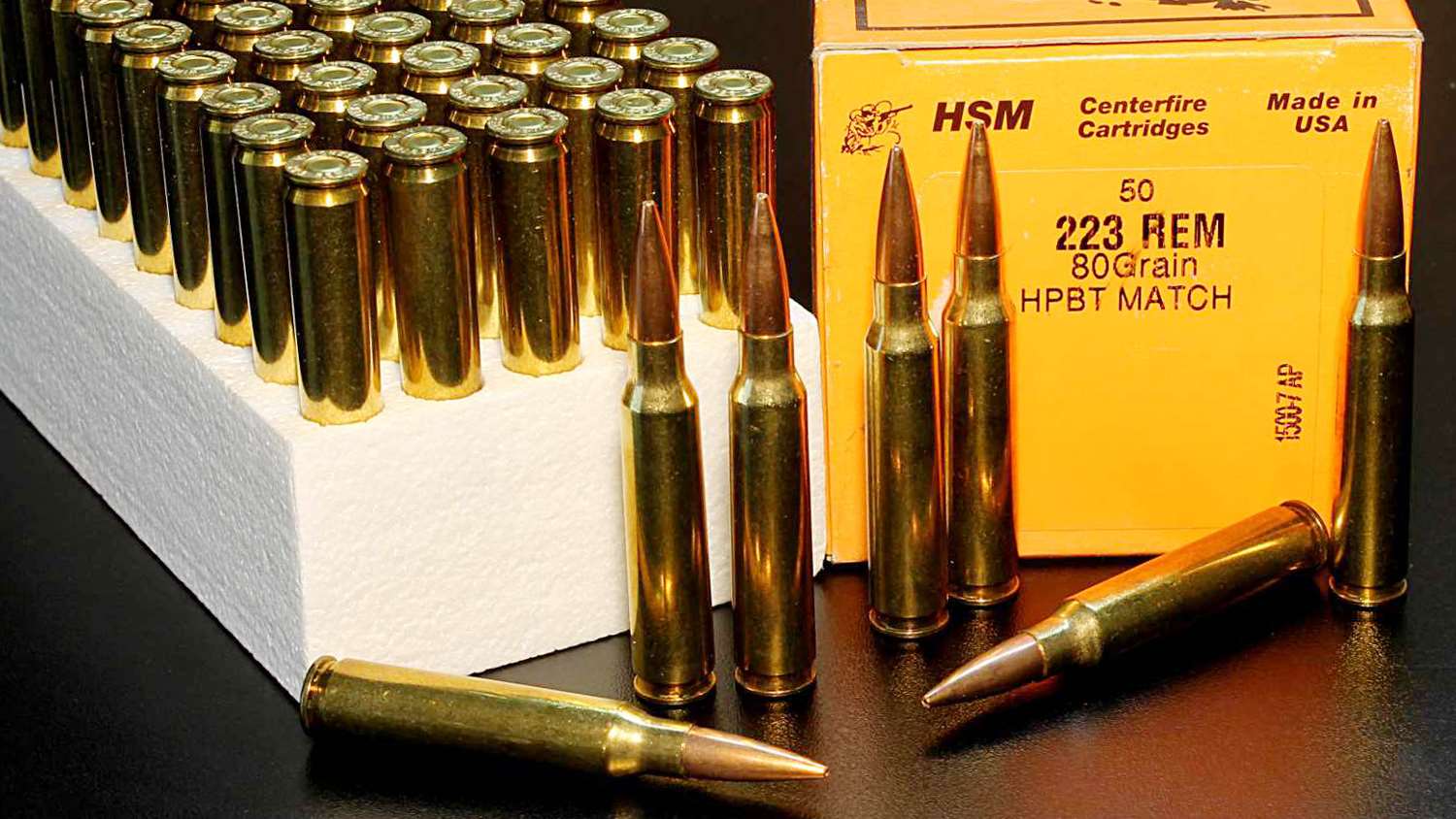
A match grade barrel with a faster twist rate of 1:7 allows us to shoot heavier, higher-BC 5.56 mm/.223 bullets for the 600-yard stage. If you’ve been shooting―very 1980s―69-grain bullets, you’ll notice a marked difference with 80-grain bullets at long range. While a 1:8 twist barrel may also stabilize the 80 grainer, some shooters find it marginal for the bullet weight because it may stabilize one maker’s 80 grainer, but not the next. Going even heavier, Berger says a 1:7 will stabilize their 90-grain VLD and BT Long Range Target bullets, but Sierra recommends a 1:6.5 for their 90-grain MatchKing, which illustrates the point.
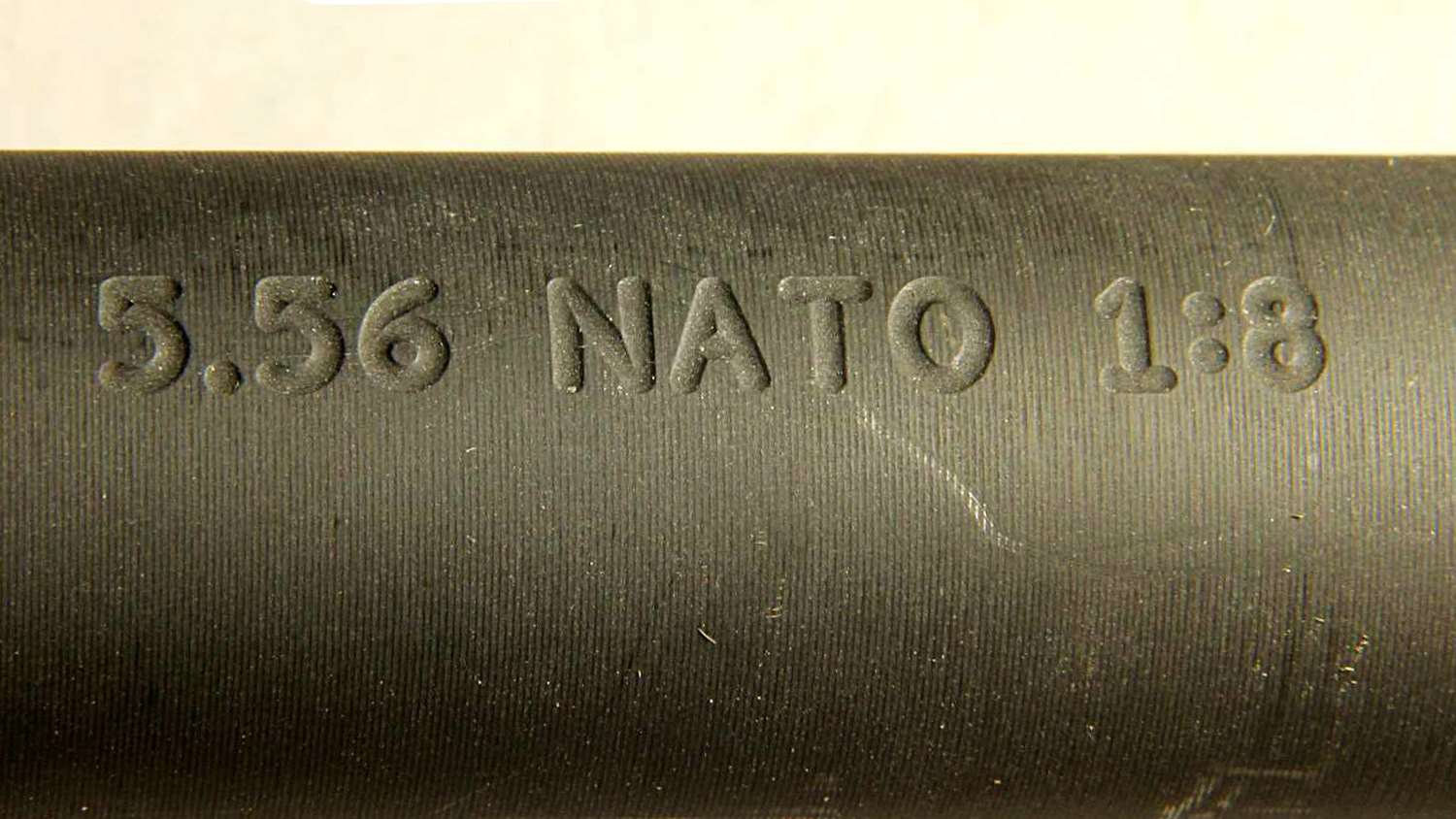
2) Ditch the hider
And while we’re at it, competition is not combat. We don’t compete during the night, so we don’t need that A2 flash hider twisted onto the end of the barrel―nor do the rules require it. The flash hider doesn’t hurt anything unless it loosens (though some might argue that the barrel is obviously less robust when the muzzle is turned down and threaded for the flash hider) but nor does it serve a useful purpose, except arguably to protect the muzzle crown. If ditching the flash hider offers a modicum of more confidence in the rifle, then why not dispense with it at the next barrel change?
3) Up-stage the trigger
NRA and CMP high power rules require a Service Rifle trigger pull weight of at least 4.5 pounds. Stacking all four-and-a-half pounds on a single stage of a trigger is not conducive for finest trigger control, especially when shooting offhand. We can upgrade the trigger by installing one that puts half or more of the pull weight on the first stage and reserves the second stage for the last two pounds or so. This allows us a more precise feel of that last bit of resistance before breaking the shot.
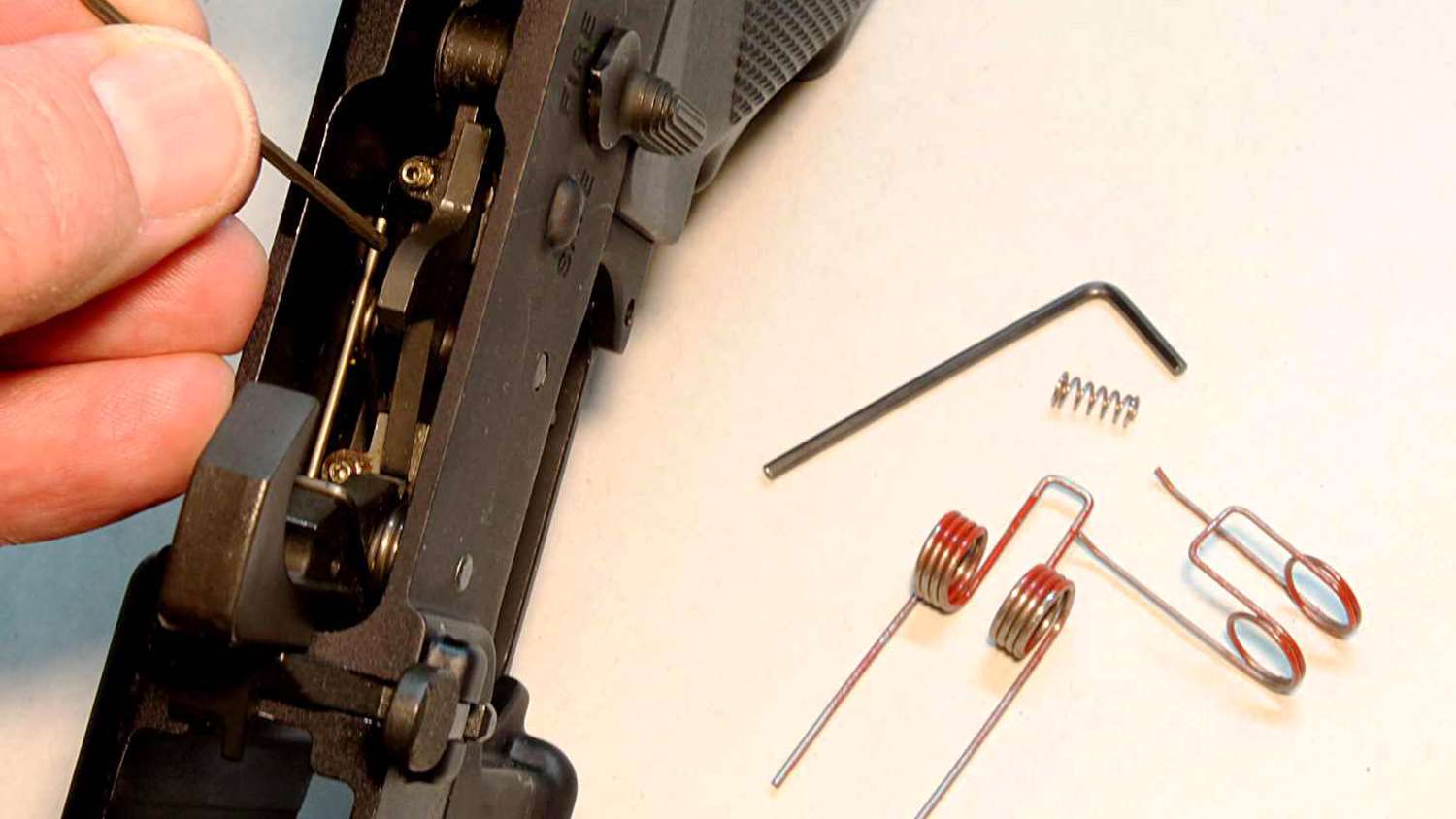
This type of trigger takes a little getting used to, but acclimating is possible in a single, focused dry-firing session and a trip to the range. Before you choose a specific prefab trigger assembly, note that CMP Service Rifle rules require “Triggers must be of standard curved design” and that any adjustments must be internal. It appears that NRA Rule 3.1 seconds this trigger shape matter in stating, “External alterations to the assembled arm will not be allowed.”
4) Magnify
If you have trouble seeing the target as more than a shapeless dark fuzz when focusing on the front sight, rules permit installing a rear sight assembly that fits a corrective lens inside the hood. We mentioned the B. Jones sight in a previous article.
Optical sights are no longer the delicate affairs of the last century; the newest generations are rugged enough for the rigors of military service rifle life, and so they are now permitted on our own competition Service Rifles. Rules permit optics (including reflective sights) with a maximum 34 mm objective lens and 4.5x magnification, which is plenty enough to gain a significant advantage in across-the-course target shooting. While it might not move you instantly from Marksman to Master at your next match, it can hardly help but provide a wee advantage over iron sight shooters within your own classification.
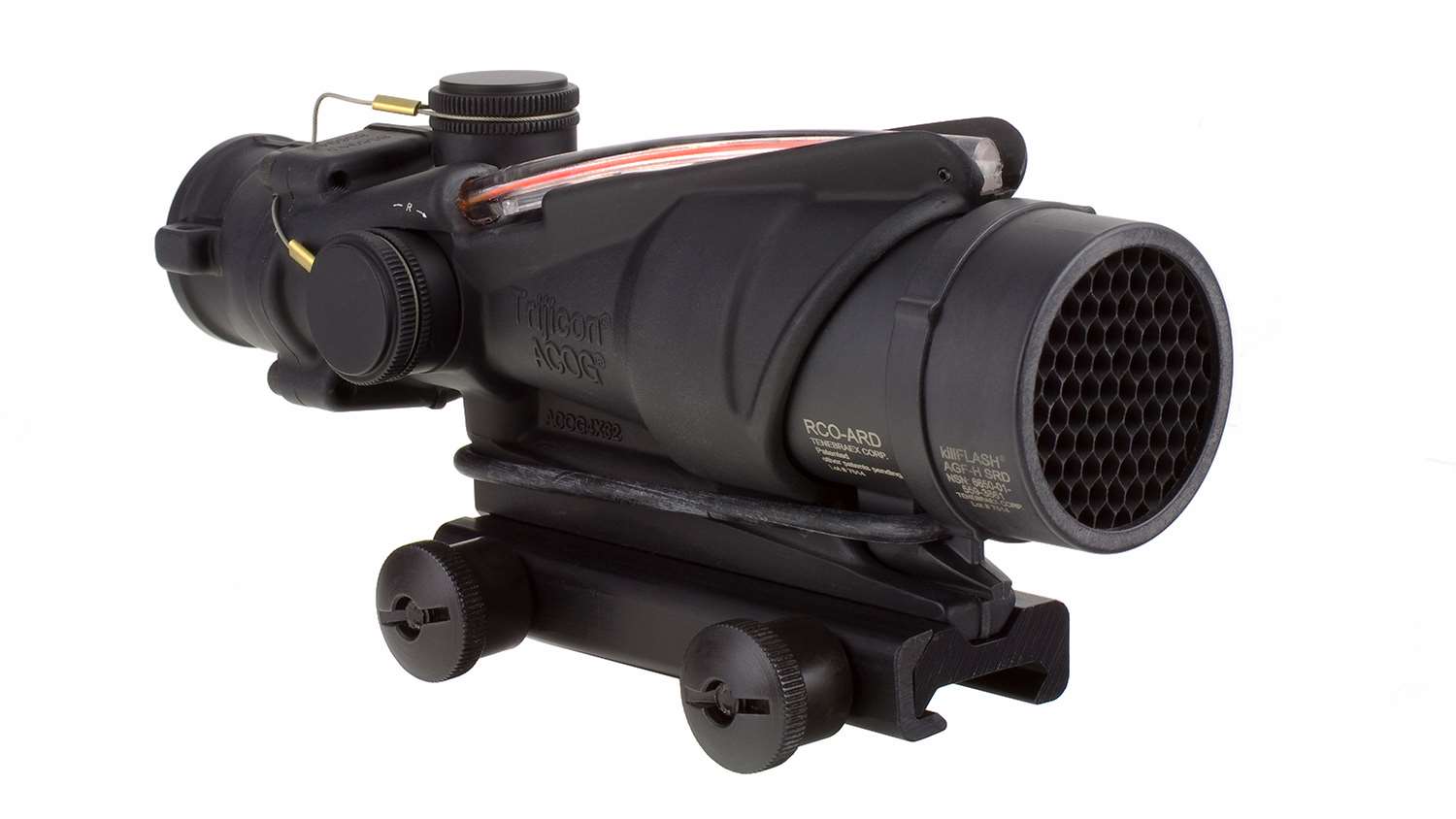
While Trijicon’s ACOG 4x32 with a red chevron ranging reticle calibrated for 5.56 mm NATO/.223 Rem. out to 800 meters costs more than a basic-black NM AR-15 Service Rifle, Hi-Lux markets their $500 XTC 14x34 scope with parallax adjustment specifically for across-the-course high power competition at one third of the price of the ACOG. You could start even less ambitiously with a simple, duplex reticle 4x32 rifle scope as an experiment to see if you choose the optical route.
5) Ergonomicize―or not
I think I just invented the term “ergonomicize,” born of a bit of head-scratching when I open the NRA and CMP high power rulebooks side-by-side. Understanding both is important, as we may shoot most competitions under NRA auspices but earning a Distinguished Rifleman badge is strictly the venue of CMP.
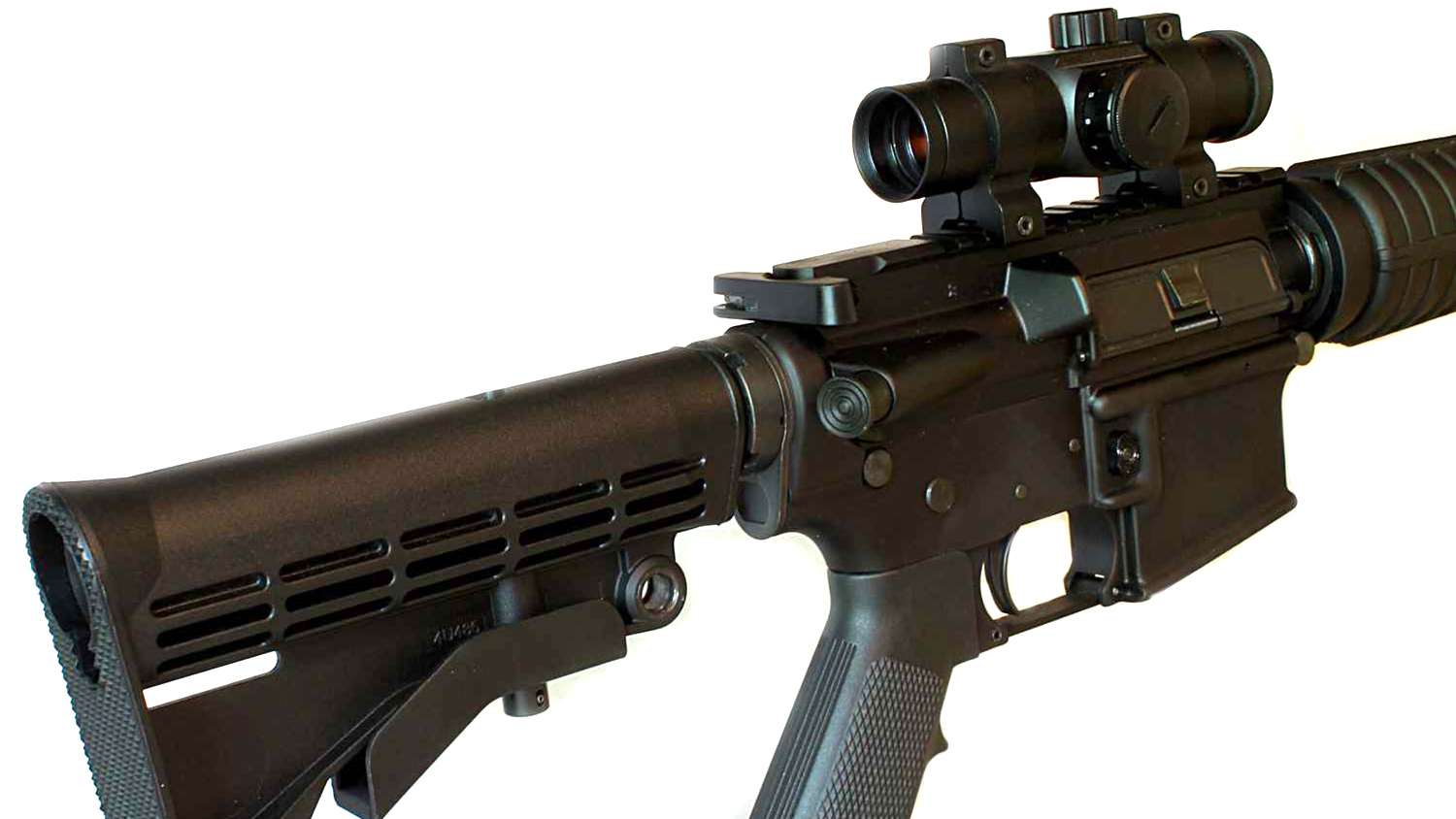
The two rulebooks use different language to get pretty much to the same point, which is that we can do a few things to make the AR-15 more ergonomic for the individual. We must utilize standard A1 or A2 style pistol grips; however, we can mount a collapsible stock to adjust our length-of-pull. As for hand guards, NRA says simply, “Quad rails or similar hand guards may be used,” whereas CMP goes into more descriptive detail of permitted hand guard features.
Installing lead weights inside the forearm and/or buttstock is a permitted internal modification. With these, we can shift weight forward to slow or shrink our “wobble area,” or shift it rearward to take strain off the forward supporting arm. Weights added fore and aft give the rifle a more solid feel and absorbs some of the recoil for faster recovery in rapid fire stages. The downside is that now we’ve got more weight to drag back to the 600-yard line.
But wait …
The savvy high power shooter will note immediately, “Hey, there are two other Service Rifles, the M-14/M1A and the M1 Garand.” Right you are, and upgrades to these venerable rifles, compared to the AR-15, are short and sweet: outwardly, we can’t change the silhouette of the rifle from as-issued configuration, except for the addition of National Match sights. But the Garand can be chambered in 7.62 mm NATO rather than .30-06. The M-14/M1A stock can be slightly wider than military issue at a couple of key locations, and to alleviate any doubts, NRA rules include a dimensional diagram of the M-14/M1A with specific measurements. Internal mods, we assume, must comply with those stated at the beginning. For an Occam’s razor kind of guy, those rules are welcomingly simple.
There’s more
Like the man in the old TV advertisements said, “But wait―there’s more.” Also under the Service Rifle category in the NRA rulebook we have the M-110 series of rifles, which is essentially the AR-10, a 7.62 mm NATO/.308 Win. version of the AR-15. Like the wood-stock rifles, upgrades are pretty much limited to the internals.
In the CMP rulebook we have the “Alternate CMP Rifle” for competitors who live where gun laws have degenerated into goofy restrictions that interfere more with legitimate competitions than with crime by prohibiting standard AR-15s. These alternate Service Rifles can be bolt action or semiauto rifles, can sport a variety of stock options and may or may not have a pistol grip. A discussion of upgrading such rifles would have to be on a case-by-case basis using the CMP rulebook as a guideline. About these alternate rifles the NRA rulebook says, “Any rifle or modified rifle not covered by NRA Rule 3.1 but permitted by CMP rules is considered a service rifle in NRA sanctioned competition.”
Disclaimer: All references to CMP and NRA rules are my own understanding of them; I did not consult the Rules Committee of either organization in researching for this article. Pointing at me while arguing with a Match Director about the legality of the espresso maker hanging on your quad rail will not provide a credible argument.













